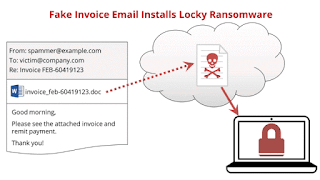Microsoft looses its Anti piracy raid case due to wrong facts in the Petition
The Bombay High Court has criticised Microsoft for making misleading claims when it secured a preliminary order that allowed the company to search the premises of a local company it accused of copyright infringement. Court vacated a stay it had granted this June in favour of the US tech major in its plea against Girnar Software over unlicensed use of its products.
In a ruling handed down on July 15, 2016 Hon. Justice Gautam Patel vacated a previous order handed down last month and has given Microsoft an opportunity to withdraw its complaint. In the dispute, US-based Microsoft sued Girnar Software earlier this year for allegedly using unauthorised copies of its software including Microsoft Windows, Office and Visual Studios. On June 24, Hon. Justice had granted Microsoft’s request for an Anton Piller order.
Under those orders, a defendant in a proceeding is required to allow a plaintiff or its representatives to enter the defendant’s premises to obtain evidence.In this case, experts from the High Court’s IT department were sent to oversee raids on Girnar’s offices in Gurgaon, Jaipur and Andheri.In its initial complaint, and which helped secure the order, Microsoft accused Girnar of having 3,315 computer systems on which there were 1,340 instances of Microsoft Windows being used.This, according to Microsoft, was despite the company having procured licences for only 545 uses.
Furthermore there were allegedly 1,308 instances of Microsoft Office being used on systems despite Girnar having only 550 licences and 60 uses of Microsoft Visual Studios despite Girnar having procured only five licences.Microsoft added that Girnar was being uncooperative in attempts to resolve the matter through negotiations.
But in his July 15 order, Hon. Justice said that when the raids were actually conducted, it was discovered that Girnar had far fewer computer systems than previously alleged. According to the court, the company had only 1,053 machines, of which only 283 ran Windows. Girnar’s counsel also revealed that Microsoft had allegedly suppressed crucial email exchanges which showed that Girnar was in fact co-operating with Microsoft. Microsoft’s counsel was asked for an explanation but claimed there was an “oversight” on its part.
Microsoft admitted that it used vague language in its pleadings including “estimated” and “approximately”, and that because the raid at one of the locations was delayed, it was possible that Girnar deleted the software from its systems. Hon. Justice criticised the claims: “My disapproval today is of Microsoft presenting speculation as fact. This is not answered by presenting me with still more speculation based on even less fact. “I find it particularly galling that attempts are now made to explain its pleading by this fuzzy reading approach; by asking me to read into words like ‘approximate’, ‘approximately’, ‘estimated’ and ‘some of which’.” "The lesson to be learned from all this, one that I believe will govern all future applications for Anton Piller orders — every one of those orders will require clearest statement of facts. Any grey areas — 'estimates', 'approximates' — will be clearly set out in the plaint. There is to be no holding back of relevant documentary material." Hon . Justice even said that in future, "every order will be conditional on the applicant depositing in court as security a sum to be decided when the order is made." This is particularly bad for organisations who were eying Anton Piller orders for enforcing Anti piracy measures.




































